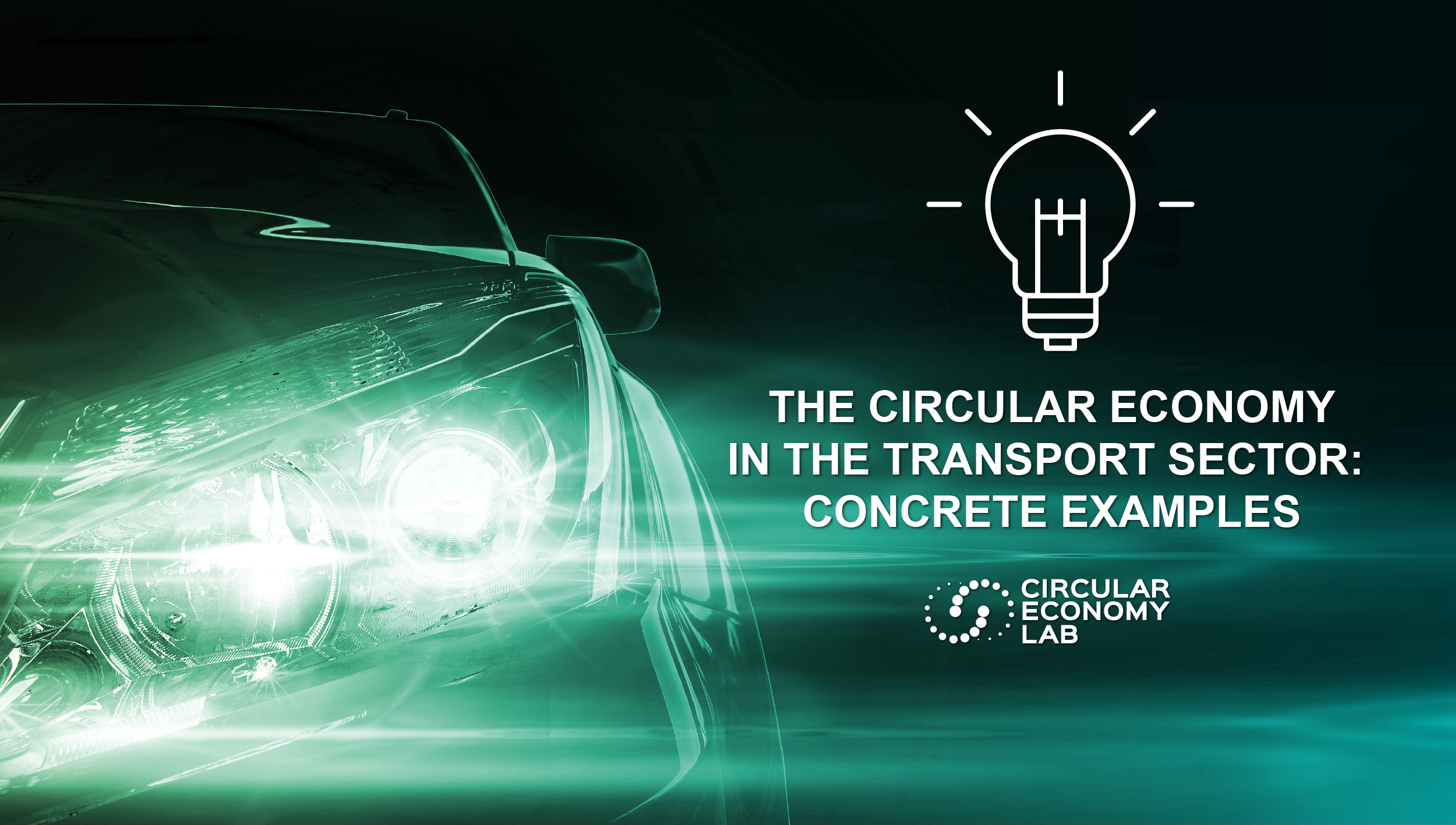
The circular economy in the transport sector: concrete examples
The circular economy is a key strategy for meeting the climate, regulatory and supply challenges of the transport sector of the future. It is not surprising, therefore, that many large companies in the "automotive" sector have long undertaken circular transition paths in production processes and sales models, through processes that involve the entire production chain and lead to the emergence of new roles, responsibilities, partnerships and services offered to customers.
In this context, the four main macro-pathways of circular transformation of companies include:
- Energy decarbonization, with a complete shift to renewable energy sources in the production and use phase of products;
- Circular material through the use of 100 percent recycled or renewable materials, and re-processing at the end of life;
- The extension of vehicle and component life through predictive maintenance solutions or design geared toward easier product repair;
- The optimization of available capacity through, for example, car-sharing platforms that allow the use of the same vehicle by multiple users.
The new offers and the factors of competitiveness of the large industrial groups
Among the large industrial groups that before others have been able to position themselves in relation to these macro-actions, identifying in time the factors of competitiveness to invest in, the case of Renault deserves an insight: the company now offers vehicles made with regenerated mechanical components, with guarantees equal to the new and at a cost of 40 percent lower than new spare parts. The production of regenerated parts of Renault, in fact, uses on 80% less energy, 88% less water, 92% less chemicals and generates 70% less waste than the production of a new equivalent. Finally, Renault also offers battery leasing agreements for its electric vehicles, so as to ensure the customer a reduction in initial costs and take advantage of battery recycling at the end of life.
Worthy of note is also the initiative of Stellantis, the Dutch multinational holding company, has announced the activation in Turin of the Group's first Circular Economy Hub. The initiative aims to promote a sustainable business model, which is fundamental to the company's decarbonization strategy, which has stated that it wants to reduce net CO2 emissions to zero by 2038. In this regard, a dedicated project team has been created that will start operating in the plant implementing three main activities: remanufacturing of components (engines, gearboxes, high-voltage batteries) to extend their useful life and offer a sustainable and affordable alternative without compromising quality; reconditioning of vehicles, to put them back on the used-vehicle market; dismantling of end-of-life vehicles, to recover original components in good condition or materials for recycling.
The Circular Economy business unit aims to generate more than 2 billion euros in revenues by 2030, quadrupling revenues from extending the useful life of components and increasing revenues from recycling by 10 times compared to 2021. In Germany, the family-owned company Hetzel regenerates the automatic transmissions of cars, while in the United States Ford uses the waste of McDonald’s coffee beans to produce car parts in reinforced plastic. In the United Kingdom, Land Rover has also introduced an aluminium recovery and recycling programme.
Thus, more and more manufacturers are adopting circular practices and generating real benefits not only environmentally, but especially economically. In fact, it is not only materials or individual production processes that are changing, but also entire innovative business models: "Mobility-as-a-service" solutions are already influencing the traditional automotive industry, with the rise of Uber, Lyft, and services such as ShareNow and Renault Mobility, which allow cars to be rented by the minute or for the entire day through a self-service app. Digital platforms, which are increasingly intuitive and easily accessible from smartphones, simplify the spread of these servitization models, accelerating the paradigm shift from a market focused on selling the "vehicle product" to offering a highly flexible and personalized "service ecosystem."
In conclusion, it is evident how the entire automotive industry is drastically evolving, driven by an increasingly attentive regulatory framework to global macro-trends and increasingly environmentally sensitive consumer habits. Technological innovation facilitates this transformation by supporting industry players who-through optimizing their production chain and exploring new circular business models-adopt solutions that enable them to decrease their environmental impact and remain competitive in the marketplace. A process, the latter, that requires a systemic approach and involves every stage of the value chain, making it necessary to develop strategies with a time horizon of medium to long term.